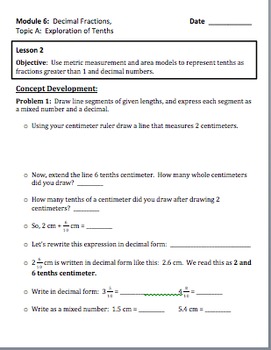New York State Common Core Math Grade 4 Module 6 Guided Notes
Chris Lasher
10 Followers
Grade Levels
2nd - 4th
Subjects
Resource Type
Standards
CCSS2.MD.C.8
CCSS3.MD.A.2
CCSS4.MD.A.2
CCSS3.NBT.A.3
CCSS3.NF.A.1
Formats Included
- Word Document File
Pages
72 pages
Chris Lasher
10 Followers
Description
What's missing from the New York State Common Core Mathematics Modules? Guided notes aligned with each module lesson! Guided notes create a link between school and home, which is essential due to the changes in Common Core from a focus on algorithms to a deeper understanding of the reasons behind the mathematical processes. These notes help your students in the classroom attentively progress with you through the module lessons with a gradual release of responsibility. Thus, creating an example for parents to reference when supporting their children at home. Not only will these notes help you with instruction, but it will also alleviate daily questions from parents who are confused about how to support their child in math. This is Module 6 of 7. Be sure to get the guided notes I have created for all of the modules!
Total Pages
72 pages
Answer Key
N/A
Teaching Duration
Lifelong tool
Last updated Apr 8th, 2015
Report this resource to TPT
Reported resources will be reviewed by our team. Report this resource to let us know if this resource violates TPT’s content guidelines.
Standards
to see state-specific standards (only available in the US).
CCSS2.MD.C.8
Solve word problems involving dollar bills, quarters, dimes, nickels, and pennies, using $ and ¢ symbols appropriately. Example: If you have 2 dimes and 3 pennies, how many cents do you have?
CCSS3.MD.A.2
Measure and estimate liquid volumes and masses of objects using standard units of grams (g), kilograms (kg), and liters (l). Add, subtract, multiply, or divide to solve one-step word problems involving masses or volumes that are given in the same units, e.g., by using drawings (such as a beaker with a measurement scale) to represent the problem.
CCSS4.MD.A.2
Use the four operations to solve word problems involving distances, intervals of time, liquid volumes, masses of objects, and money, including problems involving simple fractions or decimals, and problems that require expressing measurements given in a larger unit in terms of a smaller unit. Represent measurement quantities using diagrams such as number line diagrams that feature a measurement scale.
CCSS3.NBT.A.3
Multiply one-digit whole numbers by multiples of 10 in the range 10–90 (e.g., 9 × 80, 5 × 60) using strategies based on place value and properties of operations.
CCSS3.NF.A.1
Understand a fraction 1/𝘣 as the quantity formed by 1 part when a whole is partitioned into 𝘣 equal parts; understand a fraction 𝘢/𝑏 as the quantity formed by 𝘢 parts of size 1/𝘣.




